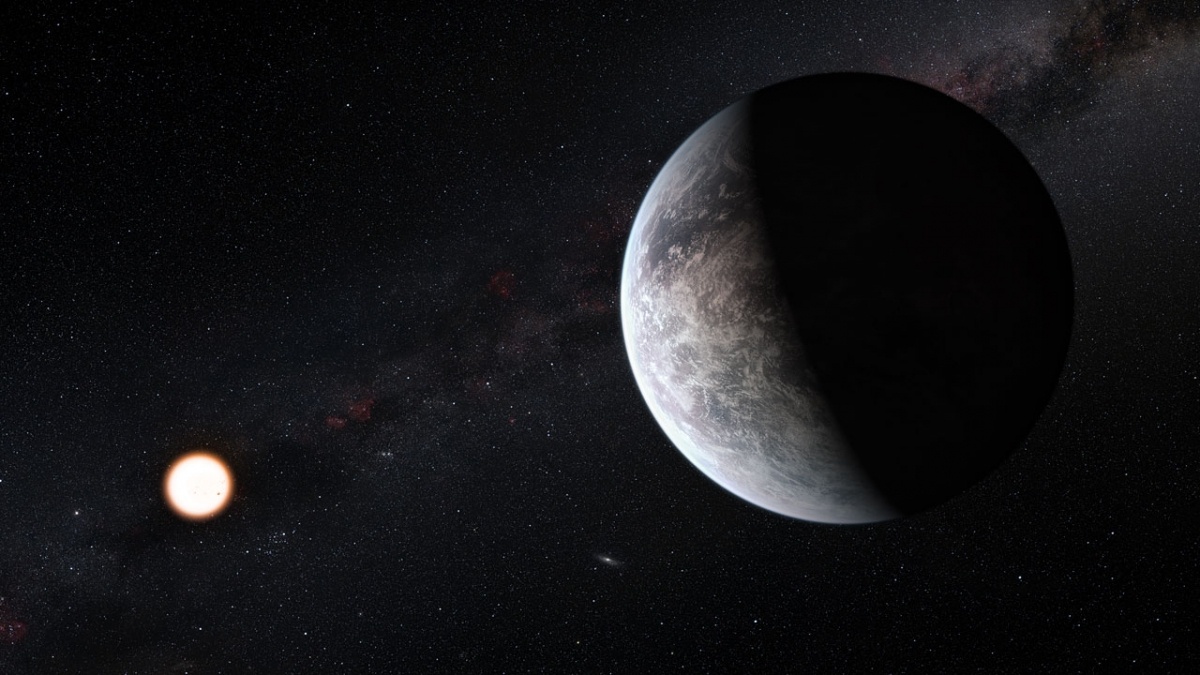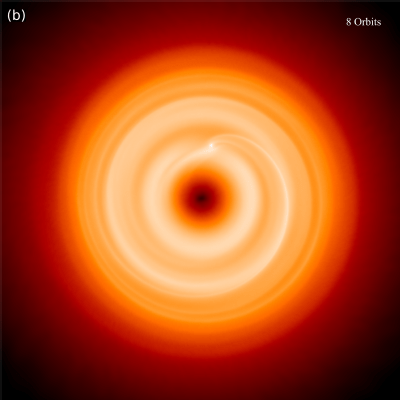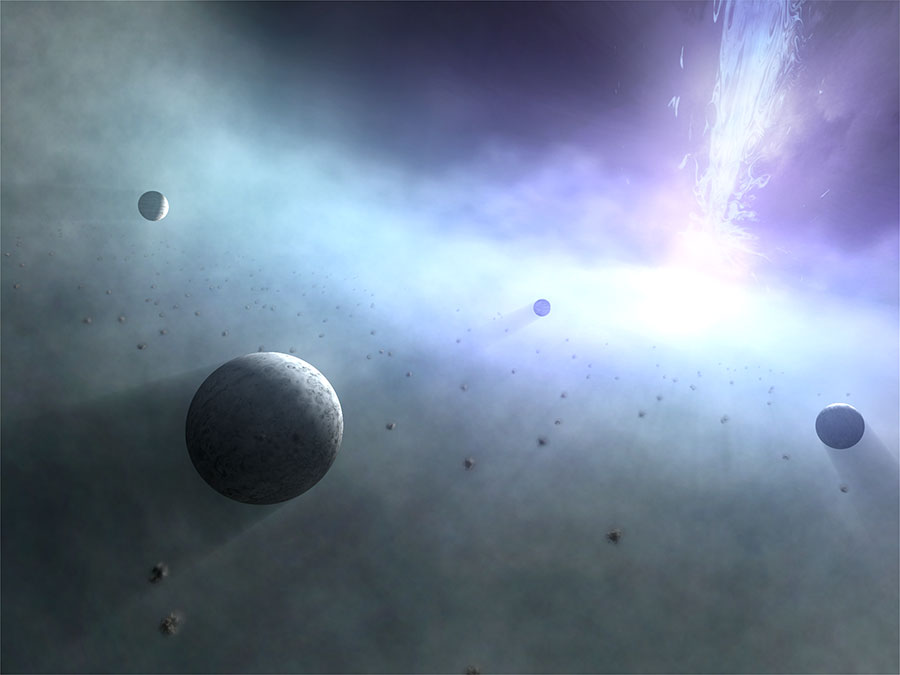We’ve learned a thing or two about exoplanets in the past several years. One of the more surprising discoveries is that our solar system is rather unusual. The Sun’s worlds are easily divided into small rocky planets and large gas giants. Exoplanets are much more diverse, both in size and composition.
Continue reading “It's Starting to Look Like Super-Earths Really are Just Great big Terrestrial Planets”Spiral-shaped Planetary Disks Should Be More Common. Giant Planets Might Be Disrupting Their Formation
Planetary system formation is a process that involves astounding and complex forces. Humans have only just started trying to understand what goes on in this extraordinarily important phase of the development of new worlds. As such, we are continuing to make new discoveries and come up with better models that better fit the observations that our instruments are able to collect.
The most recent of those improved models was announced by a research team at the University of Warwick. A paper in Astrophysical Journal Letters explores possible reasons for why there is a lack of spiral structures in newly formed protoplanetary discs. Their answer is a simple one: massive planets that form on the outside of the disc might be disrupting the spiral formation.
Continue reading “Spiral-shaped Planetary Disks Should Be More Common. Giant Planets Might Be Disrupting Their Formation”Huge Stars Can Destroy Nearby Planetary Disks
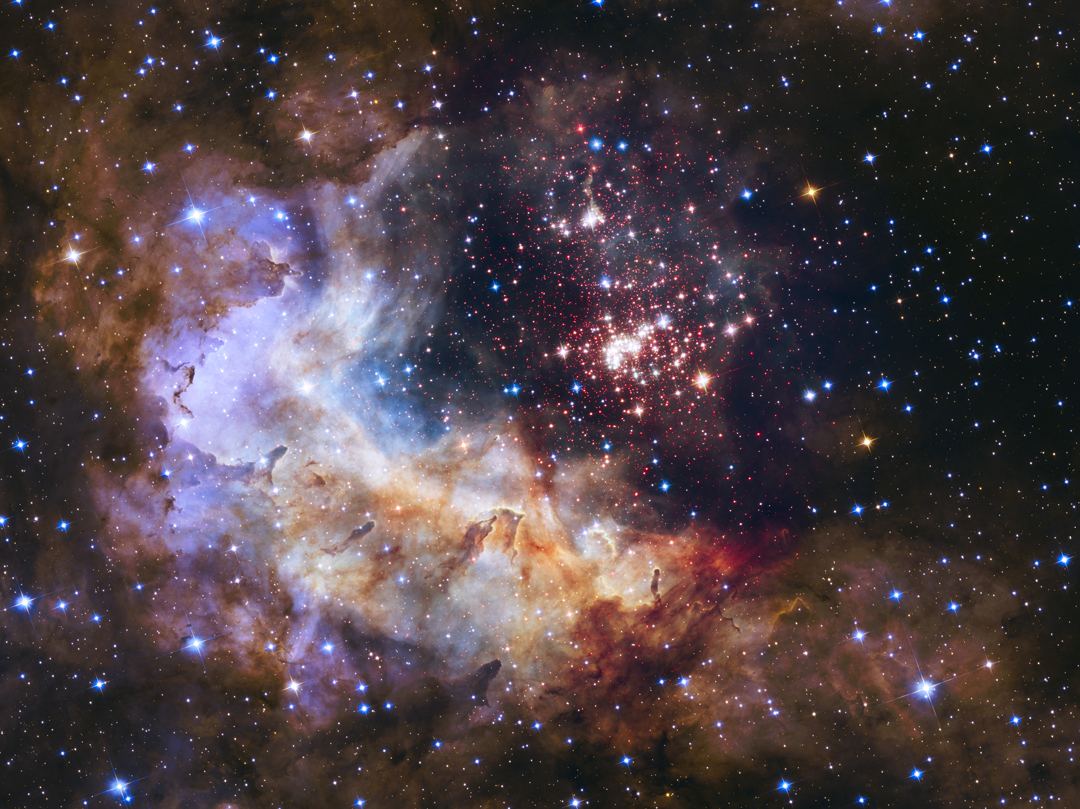
Westerlund 2 is a star cluster about 20,000 light years away. It’s young—only about one or two million years old—and its core contains some of the brightest and hottest stars we know of. Also some of the most massive ones.
There’s something unusual going on around the massive hot stars at the heart of Westerlund 2. There should be huge, churning clouds of gas and dust around those stars, and their neighbours, in the form of circumstellar disks.
But in Westerlund 2’s case, some of the stars have no disks.
Continue reading “Huge Stars Can Destroy Nearby Planetary Disks”This is an Actual Image of a Planet-Forming Disc in a Distant Star System
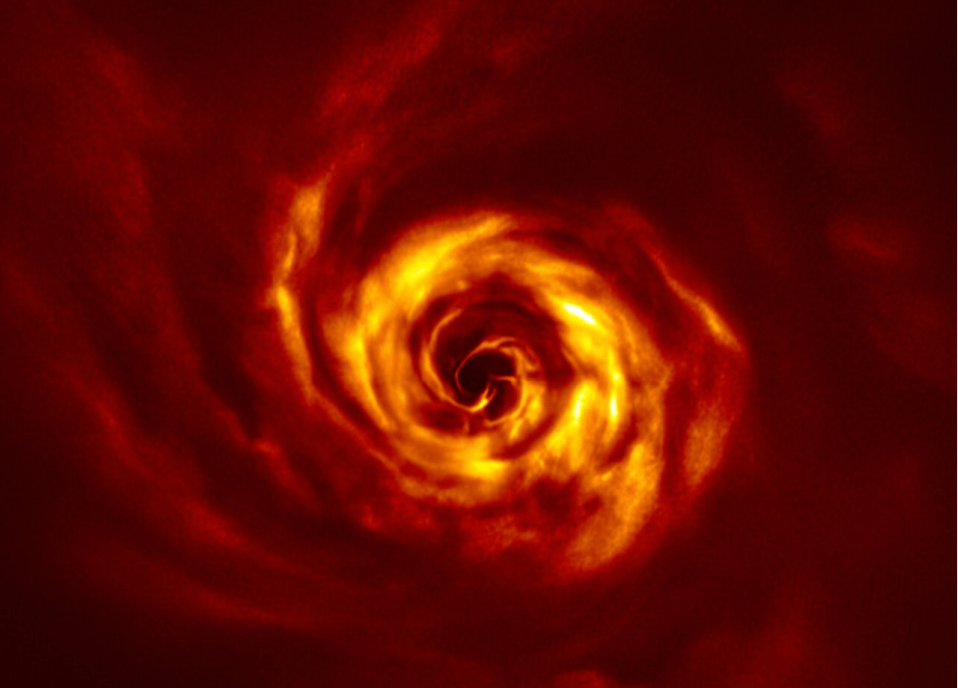
In 2017, astronomers used ALMA (Atacama Large Millimeter/sub-millimeter Array) to look at the star AB Aurigae. It’s a type of young star called a Herbig Ae star, and it’s less then 10 million years old. At that time, they found a dusty protoplanetary disk there, with tell-tale gaps indicating spiral arms.
Now they’ve taken another look, and found a very young planet forming there.
Continue reading “This is an Actual Image of a Planet-Forming Disc in a Distant Star System”Astronomers Are Sure These Are Two Newborn Planets Orbiting a Distant Star

Planet formation is a notoriously difficult thing to observe. Nascent planets are ensconced inside dusty wombs that resist our best observation efforts. But recently, astronomers have made progress in imaging these planetary newborns.
A new study presents the first-ever direct images of twin baby planets forming around their star.
Continue reading “Astronomers Are Sure These Are Two Newborn Planets Orbiting a Distant Star”There Could be Planets Orbiting Around Supermassive Black Holes
Perhaps the greatest discovery to come from the “Golden Age of General Relativity” (ca. 1960 to 1975) was the realization that a supermassive black hole (SMBH) exists at the center of our galaxy. In time, scientists came to realize that similarly massive black holes were responsible for the extreme amounts of energy emanating from the active galactic nuclei (AGNs) of distant quasars.
Given their sheer size, mass, and energetic nature, scientists have known for some time that some pretty awesome things take place beyond the event horizon of an SMBH. But according to a recent study by a team of Japanese researchers, it is possible that SMBHs can actually form a system of planets! In fact, the research team concluded that SMBHs can form planetary systems that would put our Solar System to shame!
Continue reading “There Could be Planets Orbiting Around Supermassive Black Holes”A Red Dwarf Star Has a Jupiter-Like Planet. So Massive it Shouldn’t Exist, and Yet, There It Is
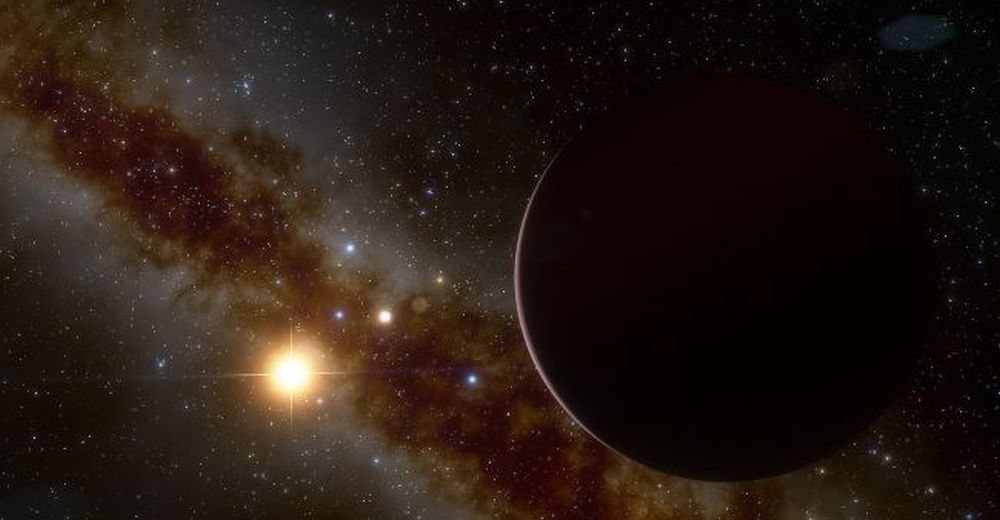
Thanks to the Kepler mission and other efforts to find exoplanets, we’ve learned a lot about the exoplanet population. We know that we’re likely to find super-Earths and Neptune-mass exoplanets orbiting low-mass stars, while larger planets are found around more massive stars. This lines up well with the core accretion theory of planetary formation.
But not all of our observations comply with that theory. The discovery of a Jupiter-like planet orbiting a small red dwarf means our understanding of planetary formation might not be as clear as we thought. A second theory of planetary formation, called the disk instability theory, might explain this surprising discovery.
Continue reading “A Red Dwarf Star Has a Jupiter-Like Planet. So Massive it Shouldn’t Exist, and Yet, There It Is”Hubble Sees a Huge Dust Cloud Around a Newly Forming Star
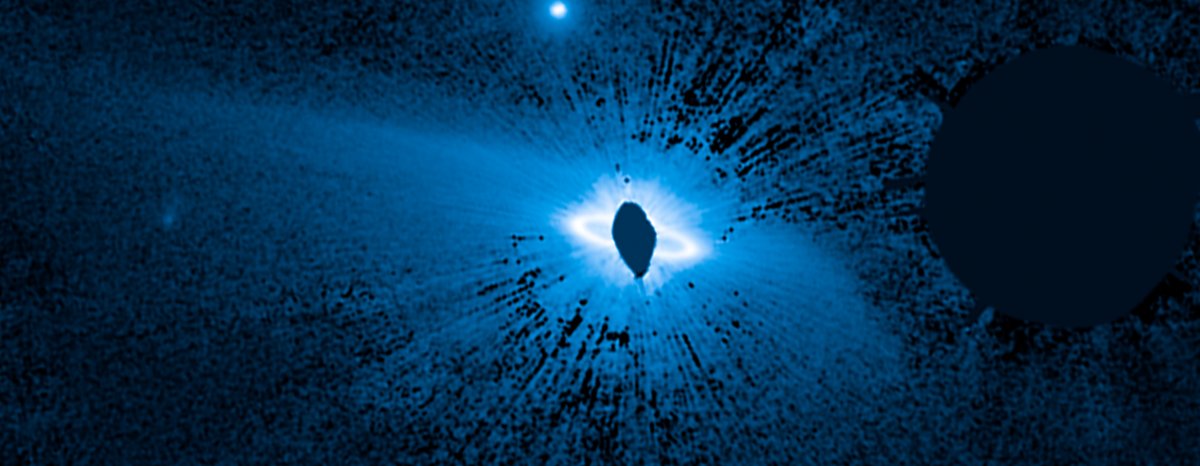
Younger stars have a cloud of dusty debris encircling them, called a circumstellar disk. This disk is material left over from the star’s formation, and it’s out of this material that planets form. But scientists using the Hubble have been studying an enormous dust structure some 150 billion miles across. Called an exo-ring, this newly imaged structure is much larger than a circumstellar disk, and the vast structure envelops the young star HR 4796A and its inner circumstellar disk.
Discovering a dust structure around a young star is not new, and the star in this new paper from Glenn Schneider of the University of Arizona is probably our most (and best) studied exoplanetary debris system. But Schneider’s paper, along with capturing this new enormous dust structure, seems to have uncovered some of the interplay between the bodies in the system that has previously been hidden.
Schneider used the Space Telescope Imaging Spectrograph (STIS) on the Hubble to study the system. The system’s inner disk was already well-known, but studying the larger structure has revealed more complexity.
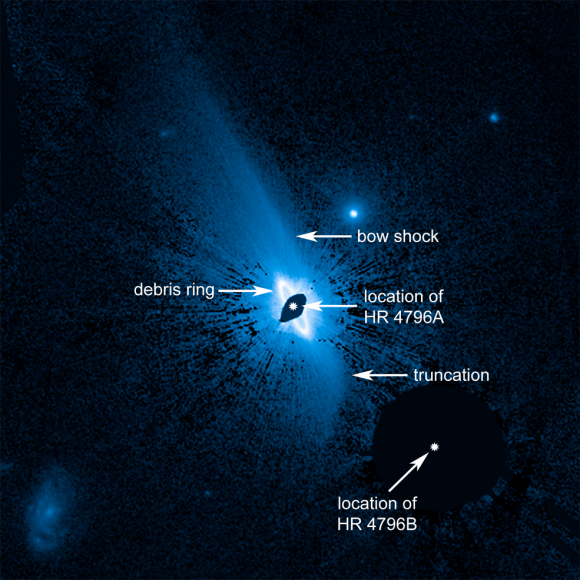
The origin of this vast structure of dusty debris is likely collisions between newly forming planets within the smaller inner ring. Outward pressure from the star HR 4769A then propelled the dust outward into space. The star is 23 times more luminous than our Sun, so it has the necessary energy to send the dust such a great distance.
A press release from NASA describes this vast exo-ring structure as a “donut-shaped inner tube that got hit by a truck.” It extends much further in one direction than the other, and looks squashed on one side. The paper presents a couple possible causes for this asymmetric extension.
It could be a bow wave caused by the host star travelling through the interstellar medium. Or it could be under the gravitational influence of the star’s binary companion (HR 4796B), a red dwarf star located 54 billion miles from the primary star.
“The dust distribution is a telltale sign of how dynamically interactive the inner system containing the ring is'” – Glenn Schneider, University of Arizona, Tucson.
The asymmetrical nature of the vast exo-structure points to complex interactions between all of the stars and planets in the system. We’re accustomed to seeing the radiation pressure from the host star shape the gas and dust in a circumstellar disk, but this study presents us with a new level of complexity to account for. And studying this system may open a new window into how solar systems form over time.
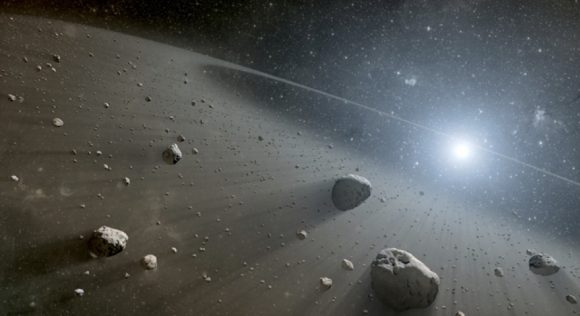
“We cannot treat exoplanetary debris systems as simply being in isolation. Environmental effects, such as interactions with the interstellar medium and forces due to stellar companions, may have long-term implications for the evolution of such systems. The gross asymmetries of the outer dust field are telling us there are a lot of forces in play (beyond just host-star radiation pressure) that are moving the material around. We’ve seen effects like this in a few other systems, but here’s a case where we see a bunch of things going on at once,” Schneider further explained.
The paper suggests that the location and brightness of smaller rings within the larger dust structure places constraints on the masses and orbits of planets within the system, even when the planets themselves can’t be seen. But that will require more work to determine with any specificity.
This paper represents a refinement and advancement of the Hubble’s imaging capabilities. The paper’s author is hopeful that the same methods using in this study can be used on other similar systems to better understand these larger dust structures, how they form, and what role they play.
As he says in the paper’s conclusion, “With many, if not most, technical challenges now understood and addressed, this capability should be used to its fullest, prior to the end of the HST mission, to establish a legacy of the most robust images of high-priority exoplanetary debris systems as an enabling foundation for future investigations in exoplanetary systems science.”
A Planet With A 27,000 Year Orbit & That’s Just Where The Strangeness Begins
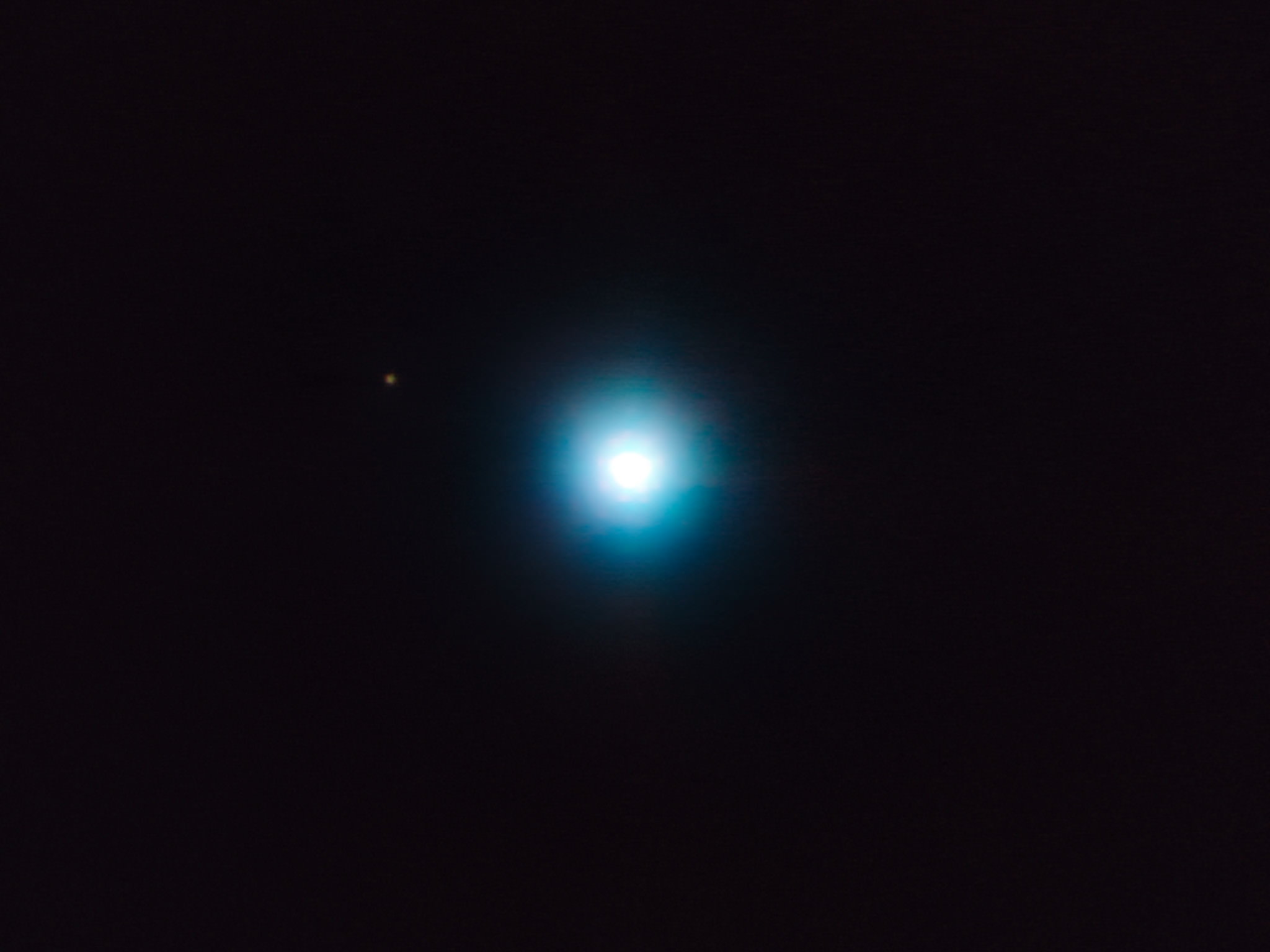
Every planet in the Solar System has its own peculiar orbit, and these vary considerably. Whereas planet Earth takes 365.25 days to complete a single orbit about our Sun, Mars takes almost twice as long – 686.971 days. Then you have Jupiter and the other gas giants, which take between 11.86 and 164.8 years to orbit our Sun. But even with these serving as examples, astronomers were not prepared for what they found when they looked at CVSO 30.
This star system, which lies some 1200 light years from Earth, has been found in recent years to have two candidate exoplanets. These planets, which are many times the mass of Jupiter, were discovered by an international team of astronomers using both the Transit Method and Direct Imaging. And what they found was very interesting: one planet has an orbital period of less than 11 days while the other takes a whopping 27,000 years to orbit its parent star!
In addition to being a big surprise, the detection of these two planets using different methods was an historic achievement. Up until now, the vast majority of the over 2,000 exoplanets discovered have been detected thanks to indirect methods. These include the aforementioned Transit Method, which detects planets by measuring the dimming effect they cause when crossing their parent star’s path, and the Radial Velocity Method, which measures the gravitational effect planets have on their parent star.
In 2012, astronomers used the Transit Method to detect CVSO 30b, a planet with 5 to 6 times the mass of Jupiter, and which orbits its star at a distance of only 1.2 million kilometers (by comparison, Mercury orbits our Sun at a distance of 58 million kilometers). From these characteristics, CVSO 30b can be described as a particularly “hot-Jupiter”.
In contrast, Direct Imaging has been used to spot only a few dozen exoplanets. The reason for this is because it is typically quite difficult to detect the light reflected by a planet’s atmosphere due it being drowned out by the light of its parent star. It can also be quite demanding when it comes to the instrument involved. Still, compared to indirect methods, it can be more effective when it comes to exploring the remote regions of a star.
Thanks to the efforts of an international team of astronomers, who combined the use of the Keck Observatory in Hawaii, the ESO’s Very Large Telescope in Chile, and the Spanish National Research Council’s (CSIC) Calar Alto Observatory, CVSO 30c was spotted in remote regions around its parent star, orbiting at a distance of around 666 AU.
The details of the discovery were published in a paper titled “Direct Imaging discovery of a second planet candidate around the possibly transiting planet host CVSO 30“. In it, the researchers – who hail from such prestigious institutions as the Cerro Tololo Inter-American Observatory, the Jena Observatory, the European Space Agency and the Max Planck Institute for Astronomy – explained the methods used to find the exoplanet, and the significance of its discovery.
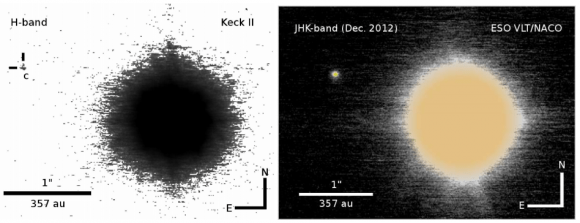
As Tobias Schmidt – of the University of Hamburg, the Astrophysical Institute and University Observatory Jena, and the lead author of the paper – told Universe Today via email:
“[30b and 30c] are both unusual on their own. CVSO 30b is the first transiting planet around a star as young as 2.5 million years. Published in 2012, all previously detected transiting planets were older than few hundred million years… It has been a surprise to find a planetary mass companion at 662 AU, or 662 times the distance from Earth to the Sun, from a primary star having only about 0.4 solar masses. According to the standard model, planets form in disks around the star. But none of the observed disks around such low-mass stars is large enough to form such an object.”
In other words, it is surprising to find two exoplanet candidates with several times the mass of Jupiter (aka. Super-Jupiters) orbiting a star as small as CVSO 30. But to find two exoplanets with such a disparity in terms of their respective distance from their star (despite being similar in mass) was particularly surprising.
Relying on high-contrast photometric and spectroscopic observations from the Very Large Telescope, the Keck telescopes and the Calar Alto observatory, the international team was able to spot 30c using a technique known as lucky imaging. This process, which is used by ground-based telescopes, involves many high-speed, quick exposure photos being taken to minimize atmospheric interference.
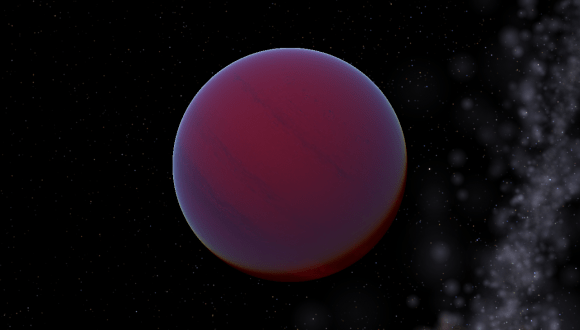
What they found was an exoplanet with a wide orbit that was between 4 and 5 Jupiter masses, and was also very young – less than 10 million years old. What’s more, the spectroscopic data indicated that it is unusually blue for a planet, as most other planet candidates of its kind are very red. The researchers concluded from this that it is likely that 30c is the first young planet of its kind to be directly imaged.
They further concluded that 30 c is also likely the first “L-T transition object” younger than 10 million years to be found orbiting a star. L-T transition objects are a type of brown dwarf – objects that are too large to be considered planets, but too small to be considered stars. Typically they are found embedded in large clouds of gas and dust, or on their own in space.
Paired with its companion – 30 b, which is impossibly close to its parent star – 30 c is not believed to have formed at its current position, and is likely not stable in the long-term. At least, not where current models of planetary formation and orbit are concerned. However, as Prof. Schmidt indicated, this offers a potential explanation for the odd nature of these exoplanets.
“We do think this is a very good hint,” he said, “that the two objects might have formed regularly around the star at a separation comparable to Jupiter or Saturn’s separation from the Sun, then interacted gravitationally and were scattered to their current orbits. However this is still speculation, further investigations will try to prove this. Both have about the same mass of few Jupiter masses, the inner one might be even lower.”

The discovery is also significant since it was the first time that these two detection methods – Transit and Direct Imaging – were used to confirm exoplanet candidates around the same star. In this case, the methods were quite complimentary, and present opportunities to learn more about exoplanets. As Professor Schmidt explained:
“Both Transit method and radial velocity method have problems finding planets around young stars, as the activity of young stars is disturbing the search for them. CVSO 30 b was the first very young planet found with these methods, currently a hand full of candidates exist. Direct imaging, on the other hand, is working best for young planets as they still contract and are thus self-luminous. It is therefore great luck that a far out planet was found around the very first young star hosting a inner planet…
“However, the real advantage of transit and direct imaging methods is that the two objects can now be investigated in greater detail. While we can use the direct light from the imaging for spectroscopy, i.e. split the light according to its wavelength, we hope to achieve the same for the inner planet candidate. This is possible as the light passes through the atmosphere of the planet during transits and some of the elements are absorbed by the composition material of the atmosphere. So we do hope to learn a lot about planet formation, thus also formation of the early Solar System and about young planets in particular from the CVSO 30 system.”
Since astronomers first began began to find exoplanet candidates in distant star systems, we have come to learn just how diverse our Universe really is. Many of the discoveries have challenged our notions about where planets can form around their parent star, while others have showed us that planets can take many different forms.
As time goes on and our exploration of the local Universe advances, we will be challenged to find explanations for how it all fits together. And from that, new and more comprehensive models will no doubt emerge.
A Star With A Disk Of Water Ice? Meet HD 100546

It might seem incongruous to find water ice in the disk of gas and dust surrounding a star. Fire and ice just don’t mix. We would never find ice near our Sun.
But our Sun is old. About 5 billion years old, with about 5 billion more to go. Some younger stars, of a type called Herbig Ae/Be stars (after American astronomer George Herbig,) are so young that they are surrounded by a circumstellar disk of gas and dust which hasn’t been used up by the formation of planets yet. For these types of stars, the presence of water ice is not necessarily unexpected.
Water ice plays an important role in a young solar system. Astronomers think that water ice helps large, gaseous, planets to form. The presence of ice makes the outer section of a planetary disk more dense. This increased density allows the cores of gas planets to coalesce and form.
Young solar systems have what is called a snowline. It is the boundary between terrestrial and gaseous planets. Beyond this snowline, ice in the protoplanetary disk encourages gas planets to form. Inside this snowline, the lack of water ice contributes to the formation of terrestrial planets. You can see this in our own Solar System, where the snowline must have been between Mars and Jupiter.
A team of astronomers using the Gemini telescope observed the presence of water ice in the protoplanetary disk surrounding the star HD 100546, a Herbig Ae/Be star about 320 light years from us. At only 10 million years old, this star is rather young, and it is a well-studied star. The Hubble has found complex, spiral patterns in the disk, and so far these patterns are unexplained.
HD 100546 is also notable because in 2013, research showed the probable ongoing formation of a planet in its disk. This presented a rare opportunity to study the early stages of planet formation. Finding ice in the disk, and discovering how deep it exists in the disk, is a key piece of information in understanding planet formation in young solar systems.
Finding this ice took some clever astro-sleuthing. The Gemini telescope was used, with its Near-Infrared Coronagraphic Imager (NICI), a tool used to study gas giants. The team installed H2O ice filters to help zero in on the presence of water ice. The protoplanetary disk around young stars, as in the case of HD 100546, is a mixed up combination of dusts and gases, and isolating types of materials in the disk is not easy.
Water ice has been found in disks around other Herbig Ae/Be stars, but the depth of distribution of that ice has not been easy to understand. This paper shows that the ice is present in the disk, but only shallowly, with UV photo desorption processes responsible for destroying water ice grains closer to the star.
It may seem trite so say that more study is needed, as the authors of the study say. But really, in science, isn’t more study always needed? Will we ever reach the end of understanding? Certainly not. And certainly not when it comes to the formation of planets, which is a pretty important thing to understand.

